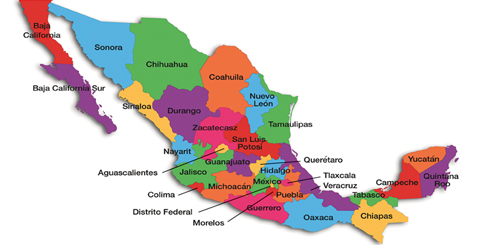Like many partners with a long history, Mexico, the United States, and Canada enjoy a relationship that’s often fraught with highs and lows. Given the current political climate, this isn’t likely to change anytime soon. One thing is indisputable: the three countries are essential trading partners, especially when it comes to agriculture.
It’s no surprise Mexico dominated U.S. agricultural imports in 2016, at nearly 20 percent, surpassing Canada as the U.S.’s top ag supplier.
Nearly 60 percent of Mexico’s ag exports go to the United States, with fresh produce accounting for $10.5 billion of this total in 2016. This steady pipeline of exports has propelled Mexico to a new ranking as the 12th-largest food producer in the world.
Here’s a look at Mexico’s vast and varied growing regions and how producers are rising to the challenge of supplying North America’s ever-increasing appetite for fresh fruits and vegetables on a year-round basis.
A History of Cultivation
Agriculture has played a key role in Mexico’s history for thousands of years. Mesoamerican civilizations, including the Olmecs, Mayas, and Aztecs, relied on agriculture as a foundation of their societies. Among their staple crops were the “three sisters”—winter squash, beans, and corn—which are still cultivated in abundance today.
But curious palates and a booming population at home and abroad have pushed other crops ahead of the traditional sisters: chile peppers, bell peppers, cucumbers, tomatoes, citrus, berries, avocados, and a wide range of tropical fruits have exploded in popularity in recent years.
In response, Mexican growers across the country—along with their Canadian and U.S. partners—have considerably stepped up production to meet demand.
Many Regions, More Produce
Mexico encompasses about 742,000 square miles, and more than half of this land is used for agricultural production, which includes ranching as well as farming operations.
Generally speaking, the country can be divided into six principal growing regions—the Baja Peninsula, the Gulf of Mexico and South, El Bajío and central Mexico, northern Mexico, the Pacific Coast, and the Yucatán Peninsula—each of which features a different climate and geography.
Top producers
While many of the country’s farming regions produce an abundance of crops, a few top the competition.
Among them are Baja California and Baja Sur in the Baja Peninsula, which is known for its berry and tomato production; the Pacific Coast, home to the ‘breadbasket’ states of Sonora and to its south Sinaloa; and El Bajío, in the lowlands of central Mexico.



